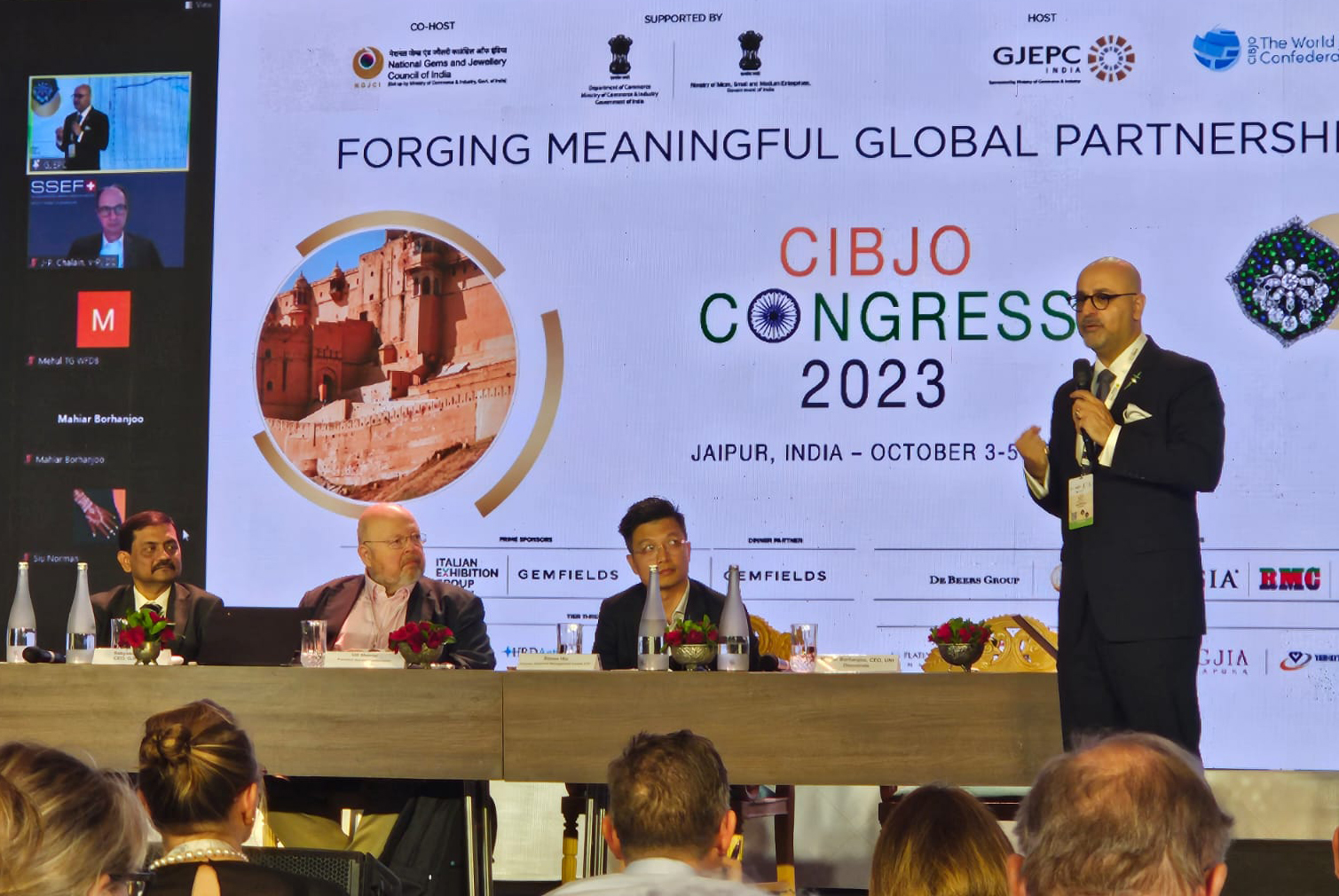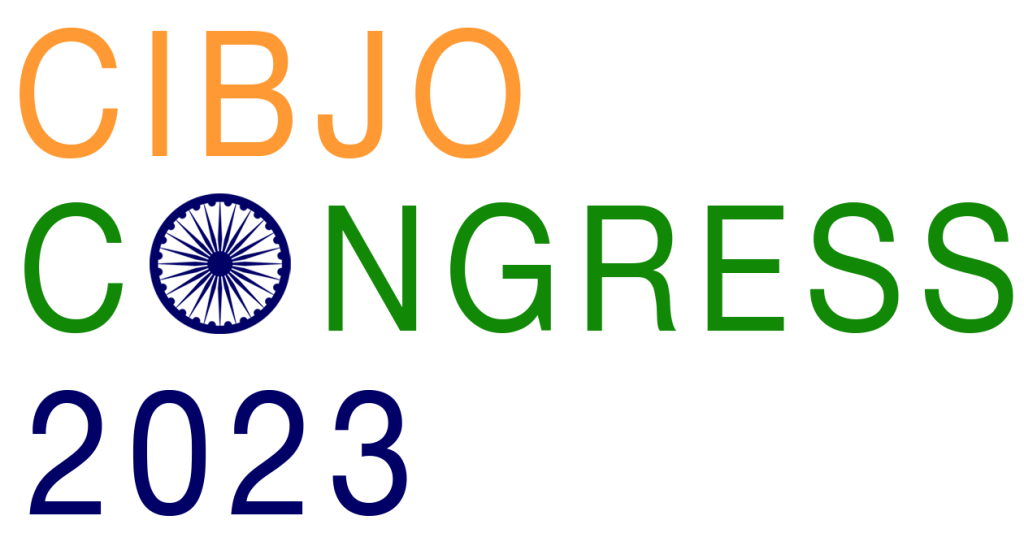CIBJO Diamond Commission looks at market and prices,
still experiencing the aftershocks of the COVID crisis

Mahiar Borhanjoo, CEO of UNI Diamonds, addressing the session of the Diamond Commission at the 2023 CIBJO Congress. Also on the podium (from left) are Sabyisachi Ray, CEO of the Gem and Jewellery Export Promotion Council (GJEPC); Udi Sheintal, President of the Diamond Commission; and Simon Hui, Director of the Chow Tai Fook Jewellery Group’s Diamond Management Centre.
OCTOBER 4, 2023
The session of the CIBJO Diamond Commission on October 4, the second day of this year’s CIBJO Congress, focused largely on the currently complicated state of the natural diamond market.
But the session opened with Diamond Commission President Udi Sheintal paying special tribute to Roland Naftule, Sector A President, who he referred to as his mentor in CIBJO, and Harry Levy, who served at different times as President and Vice President of the commission, both of whom passed away earlier this year.
Mehul Shah, Vice President of the Bharat Diamond Bourse in Mumbai, spoke of India’s historic connection to diamonds, which he said dates back 2,500 when goods were first mined in the country. There are today 1 million families involved in the trade, he said.
Co-presenting with Mr. Shah was Sabyasachi Ray, CEO of the Gem and Jewellery Export Promotion Council (GJEPC). Describing India as the land of limitless opportunities, he noted that rough imports have fallen this year, and this has a direct impact of the level of manufacturing in the centre. The Chinese market has performed less strongly than many originally thought it would after emerging from its government’s zero-COVID policy.
The world industry today is largely financed by the Indian banks, Mr. Ray stated, providing about 85 percent to 90 percent of financial credit.
Simon Hui, Director of the Chow Tai Fook Jewellery Group’s Diamond Management Centre, spoke of the fundamentals of the Chinese market, which he said are essentially strong. While demand for natural diamonds may be impacted by long-term volatility, consumer sentiment is still very positive, he added.
Savings in China are up, Mr. Hui stated, and thus the potential for natural diamond sales remain high. Disposable income rose by 6.5 percent, and brand jewellery sales are expected to rise 10 percent to 14 percent over the coming year.
In China, Mr. Hui continued, natural diamonds are still supreme, when people want to mark a special occasion. Chow Tai Fook research shows that about one-third of Chinese women say they intend buying a diamond product over the coming year.
Mahiar Borhanjoo, CEO of UNI Diamonds, a data aggregator that provides information to the industry and service providers, like financial institutions and insurance companies, focused his attention on diamond price movement.
When there is more supply prices go down, and when there is less prices go up, he stated. The industry is cyclical, and is now going through a challenging time. But, he added, it should be noted that much of the current data is being compared to spectacular sales registered in 2021.
“I blame COVID,” he stated, “because there was pent up demand and high sales, inventories were depleted, and this led to short supply that caused people to go to other products. But that unusual demand is gone, partly because people feel less of a need to celebrate loved ones than they did at the height of the crisis. Many had expected the huge demand in 2022, just like 2021, but that did not happen.”
But, added Mr. Borhanjoo, “We are now seeing a flattening out of price decreases, which is a positive sign as we approach the holiday season.”


